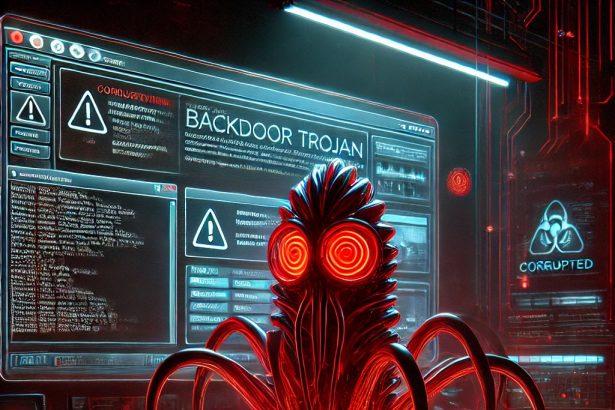What is RustySpy?
RustySpy is a highly dangerous stealer-type Trojan designed to covertly extract sensitive data from infected computers. This malware silently infiltrates systems and begins collecting device-specific information, browser data, login credentials, cryptocurrency wallet addresses, and more. Often undetectable by casual users, RustySpy can leave victims exposed to identity theft, financial fraud, and major privacy violations.
Stealer malware like RustySpy typically targets various applications—including browsers, VPN clients, FTP software, and email tools—to extract stored or session-based data. It may also possess additional surveillance capabilities like keylogging, clipboard hijacking (also known as “clipping”), screen capturing, and microphone/camera access.
Cybercriminals use RustySpy to harvest a wide range of valuable data, including:
- Username/password pairs
- Credit card and banking information
- Cryptocurrency wallet credentials
- Files (documents, images, videos)
- System specs and location-based details
Worse yet, it may evolve into more advanced variants with broader features in future iterations.
RustySpy Malware Summary
| Category | Details |
|---|---|
| Threat Name | RustySpy Malware |
| Threat Type | Trojan, Stealer, Password-stealing virus |
| Detection Names | Avast: Win64:SpywareX-gen [Trj], ESET: A Variant Of Win64/Spy.Agent.OD, Combo Cleaner: Gen:Variant.Lazy.674675, Kaspersky: Trojan-PSW.Win32.Greedy.gpm, Microsoft: Program:Win32/Wacapew.C!ml |
| Symptoms of Infection | None visible; Trojans operate silently. |
| Distribution Methods | Malicious email attachments, fake software cracks, social engineering, infected ads (malvertising) |
| Damage Potential | Theft of personal info, passwords, banking/crypto data, documents; possible surveillance through keylogging or webcam/microphone access |
| Danger Level | High – Capable of causing financial loss, identity theft, and total system compromise |
| Associated Emails | Not currently known |
| Recommended Removal Tool | SpyHunter – Advanced malware detection and removal software |
Why RustySpy Is Dangerous
The primary concern with RustySpy is its ability to quietly steal vast amounts of personal data without alerting the user. Since it behaves like many modern Trojans, it uses stealthy infiltration methods to bypass traditional antivirus programs and firewalls.
Once active, RustySpy can access:
- Saved login credentials from browsers like Chrome and Firefox
- Auto-fill data, including credit card numbers and addresses
- Cryptocurrency transactions by hijacking clipboard content
- User documents and files of interest
- Information from messengers and VPN apps
It can also record your keystrokes and take screenshots, making it a powerful espionage tool in the wrong hands.
Manual Removal of Info-Stealers (For experienced users)
Step 1: Boot into Safe Mode with Networking
Info-stealers often run in the background, making removal difficult. Restarting in Safe Mode with Networking ensures they don’t load at startup.
For Windows 10/11
- Press Win + R, type msconfig, and hit Enter.
- In the System Configuration window, go to the Boot tab.
- Check Safe boot → Network.
- Click Apply > OK > Restart.
For Windows 7/8
- Restart your PC and press F8 before Windows loads.
- Select Safe Mode with Networking and press Enter.
Step 2: Stop Malicious Processes in Task Manager
- Press Ctrl + Shift + Esc to open Task Manager.
- Look for unusual processes (high CPU usage, unknown names).
- Right-click on them and select End Task.
Common Info-Stealer Process Names:
StealC.exeRedLine.exeVidar.exeClipBanker.exeRandomized system-like names
Step 3: Uninstall Suspicious Applications
- Press Win + R, type appwiz.cpl, and press Enter.
- Locate any suspicious or unknown programs.
- Right-click and select Uninstall.
Step 4: Delete Malicious Files and Registry Entries
Info-stealers often store files in hidden locations.
Delete Suspicious Files
- Open File Explorer and navigate to:
C:\Users\YourUser\AppData\LocalC:\Users\YourUser\AppData\RoamingC:\ProgramDataC:\Windows\Temp
- Delete any suspicious folders with randomized names.
Remove Malicious Registry Entries
- Press Win + R, type regedit, and hit Enter.
- Navigate to:
HKEY_LOCAL_MACHINE\Software\Microsoft\Windows\CurrentVersion\RunHKEY_CURRENT_USER\Software\Microsoft\Windows\CurrentVersion\Run
- Delete suspicious registry keys (e.g.,
StealerLoader,TrojanRun).
Step 5: Reset Browsers and Flush DNS
Since info-stealers target browsers, clearing stored credentials is essential.
Reset Browser Data
- Open Chrome, Edge, or Firefox.
- Go to Settings → Privacy & Security → Clear Browsing Data.
- Select Passwords, Cookies, and Cached files → Click Clear Data.
Flush DNS Cache
- Open Command Prompt as Administrator.
- Type the following commands and press Enter:bashCopyEdit
ipconfig /flushdns ipconfig /release ipconfig /renew - Restart your computer.
Step 6: Scan for Rootkits
Some info-stealers use rootkit techniques to stay hidden.
- Download Microsoft Safety Scanner or Malwarebytes Anti-Rootkit.
- Perform a deep system scan.
- Remove any detected threats.
Step 7: Change All Passwords & Enable 2FA
Since credentials may have been stolen, update passwords immediately for:
- Email accounts
- Banking/finance sites
- Social media accounts
- Cryptocurrency wallets
- Work and business logins
Enable two-factor authentication (2FA) for extra security.
Automatic Removal with SpyHunter (Recommended)
(For users who want a fast, reliable removal solution)
SpyHunter is an advanced malware removal tool designed to detect and eliminate info-stealers, trojans, and spyware.
Step 1: Download SpyHunter
Click Here to Download SpyHunter
Step 2: Install and Launch SpyHunter
- Open the SpyHunter-Installer.exe file from your Downloads folder.
- Follow the on-screen instructions.
- Launch SpyHunter after installation.
Step 3: Scan Your System for Info-Stealers
- Click “Start Scan” to perform a deep scan.
- SpyHunter will identify all malware-related files.
- Click “Remove” to eliminate detected threats.
Step 4: Enable SpyHunter’s Real-Time Protection
- Go to Settings → Enable Real-Time Protection.
- This prevents future infections.
How to Prevent Info-Stealer Infections
- Avoid Cracked Software & Torrents – These often contain malware.
- Use Strong, Unique Passwords – Consider a password manager.
- Enable Two-Factor Authentication (2FA) – Protects against account theft.
- Keep Windows & Software Updated – Security updates fix vulnerabilities.
- Beware of Phishing Emails – Do not click unknown links or attachments.
- Use a Reliable Anti-Malware Solution – SpyHunter detects and removes threats in real time.
Final Thoughts
RustySpy is more than just a stealer—it’s a Trojan that opens the floodgates to digital theft and privacy invasion. Even without visible symptoms, its damage is devastating. If you suspect you’ve been infected or want to ensure your system is clean, use SpyHunter to scan and eliminate the threat effectively.
By staying informed and proactively monitoring your digital environment, you can protect yourself from threats like RustySpy before they compromise your privacy or finances.




